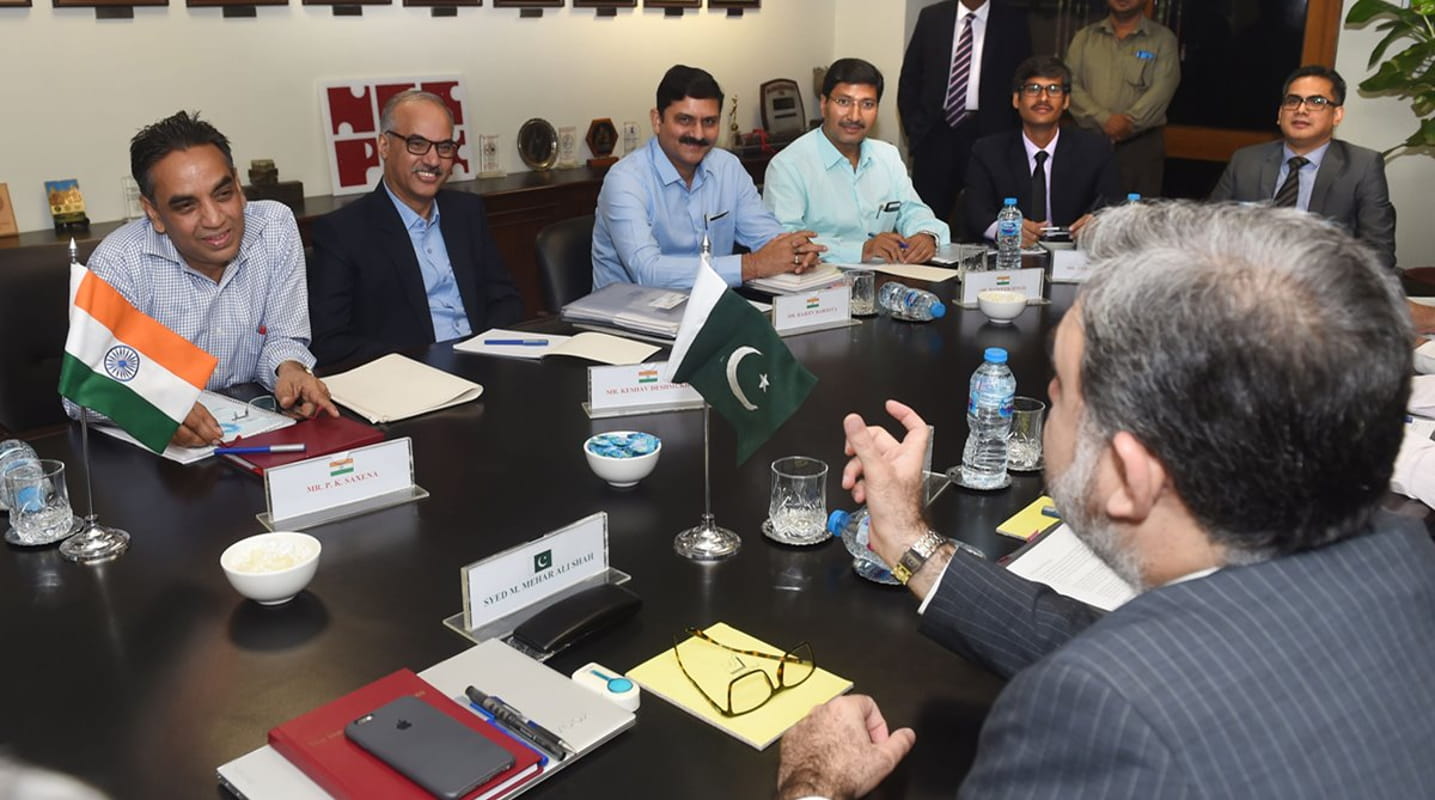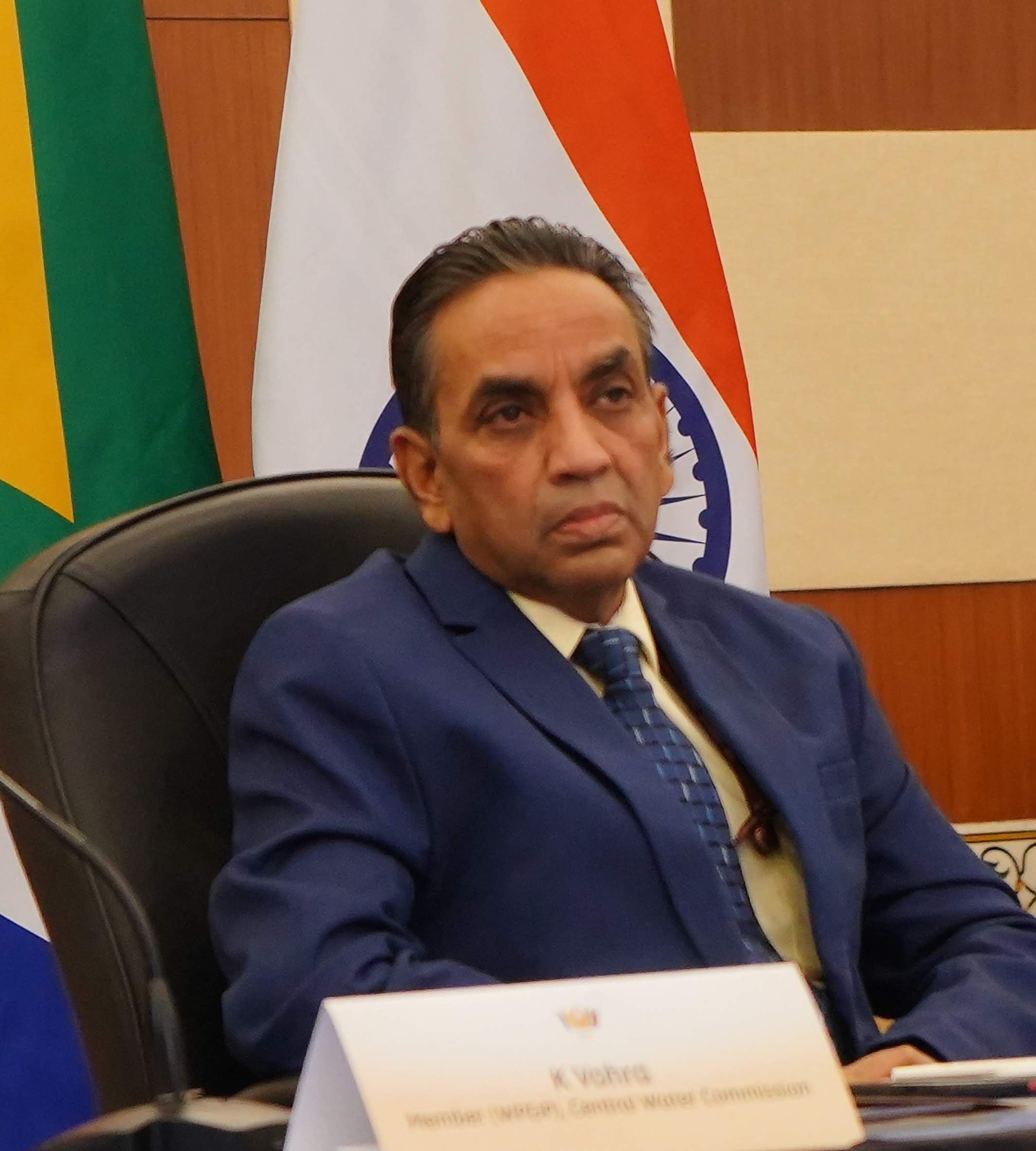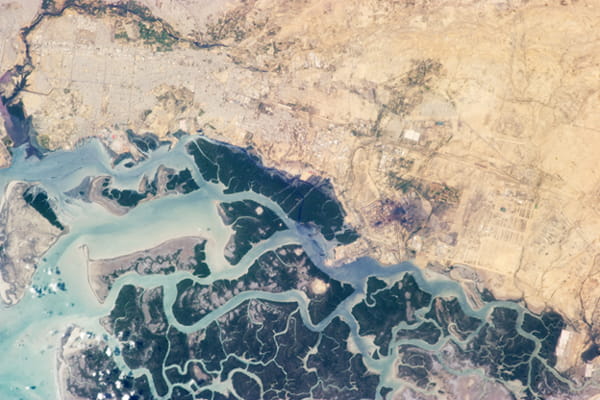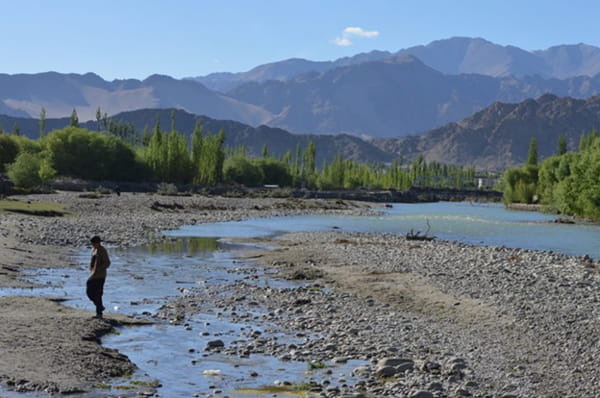
A meeting between the Indus Waters Commissions of India and Pakistan in Lahore, Pakistan, August 2018. | Associated Foreign Press.

As South Asia faces growing water security challenges, the limitations of the Indus Waters Treaty become increasingly apparent. The Treaty's legacy serves as both a warning about the limits of diplomatic accommodation and a reminder that successful international cooperation requires genuine commitment from all parties involved. For India, the experience highlights the importance of protecting national interests while pursuing regional cooperation, ensuring that generosity in negotiations is matched by reciprocal commitments from negotiating partners.
INTRODUCTION
Since 1960, water diplomacy in the Indian subcontinent has been dominated by the Indus Waters Treaty, representing, what the West considers, a landmark achievement in international water law. However, beneath the veneer of successful mediation lies a complex story of asymmetric negotiations, unequal concessions and long-term strategic implications that continue to influence India-Pakistan relations today.
The other side of this half-truth is that India made huge sacrifices and gave away much more than it received. Pakistan got most of the benefits while India agreed to several restrictions on its water use that still hurt the development of its water resources today. This paper examines the flaws in the negotiation process and why the Treaty had been a major impediment to India’s quest for regional growth.
BACKGROUND: THE WATER PROBLEM AFTER PARTITION
The Indus River System includes six major rivers that flow through both countries - the Indus, Chenab, Jhelum, Ravi, Beas and Sutlej. The System provides water for drinking, farming and electricity generation in the Indus Basin. When British India was divided into India and Pakistan in 1947, the Indus River System was also split between these two new countries, creating immediate problems due to mutual mistrust. India needed water for its own development but also wanted good relations with its new neighbor. Pakistan worried that India, being upstream, could stop water flowing into Pakistan. These concerns led to disputes between the two countries.
Sensing an opportunity, the World Bank stepped in to mediate between the two countries during this critical period. After years of intensive negotiations, the Indus Waters Treaty was finally signed in 1960, establishing a framework for water-sharing that would endure for decades. The Treaty divided the six rivers of the Indus basin between the two nations: India was allocated the three Eastern rivers (Sutlej, Beas and Ravi), while Pakistan received rights to the three Western rivers (Indus, Chenab and Jhelum) with some restricted rights given to India on these rivers.
Remarkably, India agreed to terms that granted it access to only one-fifth of the total water in the Indus System. Beyond this limited allocation, India also accepted numerous design and operational restrictions on its water usage and infrastructure development. Perhaps most notably, India agreed to provide substantial financial compensation to Pakistan, which seems disproportionate given the relatively modest water rights India secured in return. While much has been written about how the Treaty is skewed towards Pakistan, a closer examination reveals the significant concessions India made during the negotiations in what was meant to be a mutually-beneficial agreement for managing one of the world's most vital river systems.
HOW THE NEGOTIATIONS WENT WRONG
India’s Weak Starting Position
Following the 1947 partition, the Chief Engineers of East Punjab and West Punjab signed an agreement on 20 December 1947, maintaining the status quo ante for the Upper Bari Doab Canal (UBDC) and water arrangements at Ferozepore until 31 March 1948. When this temporary agreement expired with no renewal negotiations underway, Indian authorities ceased water deliveries to Pakistan through two canals passing through Indian territory. From a strictly legal standpoint, India was entirely within its rights to take this action once the bilateral agreement had lapsed.
However, despite this technically-sound legal position, India inadequately articulated its legitimate stance to the international community, creating a situation that Pakistan skillfully exploited. Pakistan successfully positioned itself as the aggrieved party, portraying India as an aggressor weaponising water resources against its neighbor. This narrative resonated powerfully with international observers, who sided with Pakistan despite the legal validity of India's actions.
Instead of standing firm, India apologised and gave an assurance not to stop water again. This set a dangerous pattern where India would give in to pressure rather than defend its legal rights.
The 1948 Agreement's undertaking by Indian Punjab not to withhold water, coupled with India's apologetic behavior, established a precedent of accommodation that would define the entire negotiation process and set the stage for future compromises. The episode demonstrates how legal correctness, without effective diplomatic communication, can result in significant reputational damage and strategic disadvantage on the global stage.

The Indus Delta photographed by an astronaut from the International Space Station. | NASA Earth Observatory.
This photograph taken by an astronaut from the International Space Station highlights the contrast between the highly urbanized and industrialized Korangi area and the dense green mangrove forests and waterways of the Indus River Delta to the south. Away from the river delta, vegetation cover disappears rapidly to the northeast.
Unreasonable Demands versus Modest Requests
The Treaty negotiations began with dramatically different water demands that immediately revealed the unrealistic nature of Pakistan's position. India's First Draft Outline Plan proposes utilising 37 million acre-feet (MAF), including 8.1 MAF already in use, representing merely 22% of available waters. This modest proposal demonstrated India's reasonable approach to water-sharing and regional cooperation.
In stark contrast, the “Preliminary Outline of Plan” as submitted by the Pakistan demanded 506 MAF, an impossible 300% of the total system supply[1]. Pakistan's outrageous demand should have strengthened India's negotiating position. It clearly showed that Pakistan was being unreasonable while India was asking for very little. However, rather than leveraging this advantage, India ultimately lost ground from the negotiation's outset, establishing a pattern of accommodation that would define the entire process.
Pakistan’s Strategy of Delay
The World Bank presented its first proposal on 5 February 1954. The proposal envisaged significant concessions by India to address Pakistan's strong objections. India would be required to forgo diverting approximately 6 MAF of waters from the Chenab River. Under the agreement, no waters from the Chenab at Merala would remain available for Indian use, nor would any waters be accessible for development in Kutch. India would also be compelled to abandon all planned developments in its territory along the upper reaches of both the Indus and Chenab Rivers, with these benefits instead accruing to Pakistan. Additionally, the proposal made no provision for new irrigation development from the Jhelum River within Indian territory.[2] India quickly accepted the proposal within seven weeks on 25 March 1954, demonstrating eagerness to resolve the dispute and move forward with regional cooperation. However, Pakistan delayed its acceptance until 22 December 1958, nearly five years later.
Once India accepted the 1954 proposal, it became morally-bound to abide by the limitations that this Proposal sought to place while Pakistan continued to develop new uses on the Western Rivers without similar constraints. Thus, it made implementation of the World Bank Proposal difficult. India’s quick acceptance of the 1954 proposal became its baseline position from which further concessions were expected. The World Bank began treating Pakistan as the difficult party that required special handling, while expecting India to keep making compromises.
World Bank's Biased Approach
Once India accepted the 1954 proposal The World Bank developed a perception that Pakistan was the "tough party" that required careful handling, while India could always be convinced to compromise through appeals to regional cooperation and international goodwill.
This led to a mediation strategy where Pakistan gained advantages while India bore the burden of making concessions. The Bank effectively rewarded Pakistan for being difficult while punishing India for being cooperative and reasonable.
Ignoring Voice of Discontent
During the negotiation process, Indian newspapers criticised India's position in the Indus Waters Treaty negotiations, arguing that the proposed water allocation between India and Pakistan would favour Pakistan and harm India's water security and agricultural production in Punjab and Rajasthan.
Although Parliamentary approval was not required, broader consultations would have helped in strengthening India’s position. Instead, the government tabled the completed Treaty two months after signing it in Parliament on 14 November 1960. During the Lok Sabha debate on 30 November 1960, the strongest opposition came from ruling party representatives from Punjab and Rajasthan, the states most affected by the Indus waters network. These members denounced the Treaty as "appeasement and surrender to Pakistan", arguing that it would severely damage Rajasthan's water prospects. This criticism highlighted the growing perception that India had negotiated from a position of weakness and had conceded too much to its Western neighbour in the interest of regional stability.

Representative image.
As South Asia faces growing water security challenges, the limitations of the Indus Waters Treaty become increasingly apparent. The Treaty's legacy serves as both a warning about the limits of diplomatic accommodation and a reminder that successful international cooperation requires genuine commitment from all parties involved. For India, the experience highlights the importance of protecting national interests while pursuing regional cooperation, ensuring that generosity in negotiations is matched by reciprocal commitments from negotiating partners.
WHAT INDIA LOST IN THE FINAL DEAL
Water Allocation
The Treaty gave Pakistan much more water than India. Under the final Treaty terms, India agreed to let most of the waters of the Western Rivers flow to Pakistan while receiving only 12 MAF from the Eastern Rivers in the bargain: water that Pakistan was already using at partition. This allocation effectively gave Pakistan the larger share of the Indus System waters while requiring India to develop alternative sources for its own needs. India did not actually gain any new water from the deal.
Additionally, India accepted the unprecedented financial burden of paying approximately £62 million for replacement works in Pakistan-occupied Kashmir. This payment represented a unique precedent in international water law, where the upstream country paid for infrastructure development in the downstream country.
India essentially paid Pakistan to accept a deal where Pakistan got most of the water. This created a strange situation where the country giving up more water also had to pay for the privilege.
Sacrificing Permanent Development
The magnitude of India's sacrifice is captured in A.N. Khosla's letter to the World Bank dated 25 March 1954, where India acknowledged that “The proposal requires India to give up the use of a large part of the water flowing through her own territory and thus to abandon, for all time, any hope of the development of a considerable portion of the extensive arid lands in India which has no possible source of water supply other than Indus system of rivers and which will therefore remain a desert forever and that as such the sacrifices that India is being called upon to make are extremely heavy and constitute a serious blow to the economic development of this region. Nevertheless, in the interest of a speedy and constructive settlement and in the spirit of goodwill and friendship that has guided my government ever since the beginning of this controversy, we accept the principles of the Bank Proposal as the basis of agreement.”
This means India literally accepted to keep parts of its own territory undeveloped permanently. Vast areas of land that could have been irrigated and made productive were condemned to remain desert in the interest of appeasing Pakistan.
THE TREATY’S UNFAIR STRUCTURE
Unprecedented Perpetual Nature
The Indus Waters Treaty stands as the world's only perpetual water Treaty with no end date and no provision for modification or review. This unprecedented structure eliminated India's future flexibility while creating permanent obligations that cannot be adjusted as circumstances change or as new challenges emerge.
Restrictive Conditions only apply to India
The Treaty imposed numerous restrictive conditions on India's legitimate right to generate hydropower while failing to include corresponding obligations for Pakistan. Under the provisions of the Treaty, India must follow specific design and operating restrictions for its components of the project, faces limits on water storage capacity, must allow Pakistan to inspect and object to Indian projects. These restrictions have proven to be significant barriers to India's energy and development objectives in the region, particularly in Jammu and Kashmir where hydropower potential remains largely untapped due to the Treaty’s constraints.
Third-Party Involvement
This approach created a permanent third-party involvement in India-Pakistan water relations, limiting the sovereignty of both countries over their water resources. The Treaty also contradicted India's general policy of resolving bilateral issues bilaterally by institutionalising Western mediation in India-Pakistan water relations. Thus, Western mediators became permanently involved in disputes between the two countries.
Pakistan's Systematic Obstruction
Pakistan has systematically used the Treaty as a tool to hamper Indian development, objecting to nearly all hydroelectric projects on Western Rivers regardless of size or design.
Paradoxically, Pakistan has opposed projects like Pakal Dul and Tulbul despite acknowledging their benefits for regulated water flow, demonstrating how the Treaty's dispute resolution mechanisms can be exploited for obstruction rather than genuine cooperation.
LONG-TERM CONSEQUENCES AND REGIONAL IMPACT
Development Constraints in Jammu and Kashmir
The Treaty's restrictions have created lasting constraints on India's development potential in the Indus Basin Region, with particularly acute impacts in Jammu and Kashmir. The inability to optimally utilise available water resources has lasting implications for energy security, agricultural development and regional economic growth. Local populations increasingly view the Treaty as an impediment to their developmental aspirations and economic progress.
India created a framework that Pakistan could exploit indefinitely to prevent Indian development while neglecting its own water infrastructure. This growing sentiment raises questions about the Treaty's long-term sustainability and its alignment with the developmental needs of the region's inhabitants.
The Treaty's rigid structure, combined with Pakistan's obstructionist approach, has created a situation where regional cooperation has been replaced by systematic obstruction of development initiatives.

A small channel drains into the Indus near Choglamsar in Leh. | Athar Parvaiz.
LESSONS FROM THIS EXPERIENCE
The Indus Waters Treaty negotiations offer several important lessons about international negotiations:
Diplomatic Generosity without reciprocity creates Problems
India's well-intentioned approach to regional cooperation backfired because Pakistan did not reciprocate. When one side keeps making concessions while the other side keeps demanding more, it creates an unhealthy dynamic where generosity is seen as weakness rather than goodwill.
Mediators can develop Biases
The World Bank's approach showed how international mediators can develop biases that favour one party over another. By treating Pakistan as the "difficult party" that needed special handling, the Bank inadvertently created incentives for Pakistan to be more demanding while expecting India to be more accommodating.
Permanent Treaties lock countries into Bad Deals
The Treaty's perpetual nature means that even if circumstances change dramatically, India cannot escape the disadvantageous terms. This shows the danger of agreeing to permanent international agreements without provisions for review and modification.
Good Intentions do not guarantee Good Outcomes
India entered the negotiations with genuine intentions to cooperate and share resources fairly. However, these good intentions were exploited by Pakistan to extract maximum concessions. While the Treaty was considered then as a mechanism for "buying peace" by providing a framework for water sharing and preventing conflict, the outcome proved otherwise.
It demonstrates that successful international agreements require not only mutual good faith but also balanced incentive structures and enforcement mechanisms that align with the long-term interests of both parties.
LOOKING FORWARD
The Indus Waters Treaty is often celebrated as a success story in international water diplomacy. However, this paper shows that the Treaty represents a cautionary tale about the dangers of one-sided diplomatic accommodation.
As South Asia faces growing water security challenges, the limitations of the Indus Waters Treaty become increasingly apparent. The Treaty's legacy serves as both a warning about the limits of diplomatic accommodation and a reminder that successful international cooperation requires genuine commitment from all parties involved. For India, the experience highlights the importance of protecting national interests while pursuing regional cooperation, ensuring that generosity in negotiations is matched by reciprocal commitments from negotiating partners.
(Exclusive to NatStrat)
Endnotes: